HomeBridge Youth Society
Fiscal Year April 1, 2024 – March 31, 2025


HomeBridge Youth Society
Fiscal Year April 1, 2024 – March 31, 2025

It has been my privilege to serve on the HomeBridge Board of Directors over the past eight years, including the last four as Board Chair. During this time, HomeBridge has faced unprecedented challenges; from the COVID-19 pandemic and the resulting staffing shortages, to the temporary closure and reopening of programs. Through it all, we the Board have been continually inspired by the unwavering dedication, resilience, and innovation of the HomeBridge employees. Their ability to adapt and evolve their services to meet the dynamic and ever-changing needs of youth-in-care and their ability to keep services operating with so many variables not in their favour has been truly commendable.
Over the past year, the Board took steps to further support Ernie and the HomeBridge team. We engaged consultants to help develop a strategic plan that helps chart the next five years of strategic priorities. Our Board committees have worked to formalize our governance practices through updated terms of reference and other administrative improvements. Our recruitment efforts also continued with a focus on diversity to ensure the Board is reflective of the communities served by HomeBridge. We also are focused on recruiting directors from specific professions to enhance our oversight and impact.
One of our goals last year was to meet with the Minister of Community Services to deepen our working relationship with the Department. Before that could happen, however, the Department changed its name to the Department of Opportunities and Social Development and a new Minister and Associate Deputy Minister were appointed. Our relationship building efforts will continue as we are committed to fostering strong partnerships to collectively improve outcomes for youth-in-care and their families.
One of the challenges I mentioned earlier brought a significant operational change to HomeBridge in 2024. This was the permanent closure of the Johnson House program after 43 years. The government made the decision to utilize the building for a different demographic of youth and mandate. That decision obviously created a context of uncertainty and unpredictability that continues to have a concerning presence, however we were very pleased to reopen Hawthorne House in April, restoring that service for six youth and bringing the overall capacity to 36 youth. Although the challenges in the sector remain, there is a sense of energy and optimism looking ahead.
Thank you for your continued belief in HomeBridge and in the potential of every young person we serve. The Board are proud to be part of this community and to work alongside such dedicated, compassionate professionals. They make a positive change in a young person’s life each and every day.
Sincerely,
Jim Perrin, Board Chair
Our relationship building efforts will continue as we are committed to fostering strong partnerships to collectively improve outcomes for youth-in-care and their families. “ ”


Jim Perrin, Board Chair Physical Security Manager, J.D. Irving Limited

Shawn Carter, Chief Information Officer, Nova Scotia Legal Aid

Daphne Hutt-MacLeod, Registered Psychologist, Director Integrated Youth Services IWK

Michael Jachimowicz, CPA PricewaterhouseCoopers LLP, Manager Assurance


Lyn Frankton, RN, BScN, Vice-Chair Manager, IWK Youth Forensic Services

Chantelle Cadeau, CPA, Treasurer Senior Manager,Assurance, PricewaterhouseCoopers LLP

Richard Dunbar, CD, MBA, PMP, Aviation Supervisor, 12 Wing, Canadian Armed Forces

Dr. Herb Orlik, Child and Adolescent Psychiatrist, Retired, IWK Health Centre, Department of Psychiatry

Paul Sheppard, Managing Lawyer, Nova Scotia Legal Aid Youth Office

Stephanie Johnson, Superintendent, Administration, Halifax Regional Police

Jocelyn Poirier, CPA Senior Manager, Finance and Operations, BDO Canada LLP
We acknowledge we are in Mi’Kma’ki, the ancestral and unceded territory of the Mi’kmaq people. This territory is covered by the “Treaties of Peace and Friendship” which Mi’kmaq and Wolastoqiyik (Maliseet) people first signed with the British Crown in 1725.

Uncertainty carries a multitude of challenges. It fosters anxiety, fear, and a cautiousness that can hinder both innovation and growth. This liminal space, where the unknown dominates, can be particularly paralyzing for those working to create positive change in their environments and communities.
Globally, we are living in and through uncertain times. The ripple effects of instability have impacted nations, economies, and ultimately, individuals. At HomeBridge, we have not been immune to these challenges. Over the past year, we have had to navigate unpredictability with care and determination, doing our best to mitigate the negative impacts on our services and the young people we support.
Due to a province-wide shortage of qualified Child and Youth Care workers, we were forced to make the difficult decision to close two of our programs. In late August, we received notice that funding for Johnson House, one of our longest-standing services, would not be renewed. After 42 years of dedicated service, saying goodbye to Johnson House was an emotional and painful experience. Equally difficult was parting ways with six of our most experienced Youth Care Workers. While their departures were deeply felt, we understand and respect their decisions, especially given the opportunity to pursue higher wages elsewhere.
Despite these challenges, there is hope and more importantly, solutions. We have seen firsthand that many Nova Scotians are eager and capable of entering this field. With the generous support of the Department of Community Services (Opportunities and Social Development), we were able to offer extensive training programs at no cost to participants. The result was immediate: an increase in the number and diversity of qualified candidates ready to serve. This innovative model is a promising approach to addressing labour shortages, and we hope similar initiatives will be supported moving forward to prevent further service reductions.
The path ahead for our sector is clear: transformation is needed. We were encouraged to see many of these necessary changes outlined in the Nova Scotia Auditor General’s Report, and we eagerly await news regarding funding and staffing allocations for not-for-profit, Level II community-based services. We believe that all youth-in-care, regardless of the setting in which they are placed, deserve equitable support and opportunities to thrive.
Training remains a top priority for us. For the first time in our history, our workforce demographics reflect the following:
of total employees have been with HomeBridge for less than years. 60% 5
of Youth Care Workers have less than years of service. 70% 5
The road ahead is not without its hurdles, but it is one we are well-prepared to walk even run.
of Youth Care Workers have been with us for under year. 38% 1
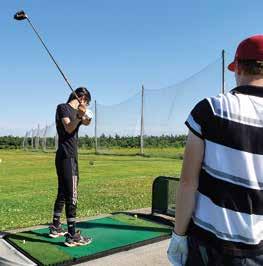
HomeBridge has long been recognized for having some of the most skilled and compassionate direct care practitioners in the sector. Yet, this data underscores how significantly we’ve been affected by broader circumstances. Over the next two years, we are committed to strengthening our workforce’s capacity through comprehensive training and meaningful supervision. Our goal is to ensure that every young person we serve continues to receive exceptional care; care that is not only informed by theory, but brought to life through practice and experience.
Fortunately, we are not alone in this endeavor. HomeBridge is proud to be connected to an international network of trainers and researchers, many of whom are ready and willing to help us sustain and enhance our service excellence. We remain confident in our ability to maintain the high standards that HomeBridge is known for, both provincially and nationally.
The road ahead is not without its hurdles, but it is one we are well-prepared to walk even run. With dedicated staff, committed managers, and a passionate Board of Directors, we will continue to adapt, grow, and overcome. Our collective resilience and focus will ensure that the young people and families we serve receive the very best care and support available.
On behalf of everyone at HomeBridge, I would like to extend our deepest gratitude to the Departments of Opportunities and Social Development, Education, and the IWK Health Centre for believing in our mission and supporting our work. To our generous donors and supporters, thank you. Your contributions, both financial and moral, are powerful reminders that the youth we serve truly matter.
Finally, to St. Paul’s Home Board, thank you for what is approaching 50 years of unwavering partnership. Without your continued support, HomeBridge would not exist. Your commitment to our cause has made all the difference.
With appreciation and the hope for the year ahead.
Ernie Hilton Executive Director

I am incredibly proud of the work accomplished over the past 12 months at HomeBridge, both within the youth care sector and beyond. Throughout the year, we remained committed to overcoming the challenges we faced in recruitment and retention—and we made significant progress in both areas.
In response to a critical staffing shortage at the start of the year, we launched a recruitment campaign unlike anything we had done before. This initiative resulted in a substantial increase in the number of qualified youth care workers hired, allowing us to reopen Hawthorne House on April 7. And we’re not stopping there. As part of our ongoing recruitment strategy, we’ve also focused on increasing our visibility in post-secondary institutions, presenting to first- and fourth-year students to introduce them to youth care work at HomeBridge.
With such a large recruitment effort, we also placed a strong emphasis on training—building capacity among youth care workers to ensure the quality of care for young people remained high. We’ve once again evolved our new employee training program, providing staff with access to a wide range of learning opportunities and continued support throughout their first 12-18 months of employment.
In addition to mandatory licensing training, we offered diverse professional development opportunities, including sessions on relational practice with Dr. John Digney, The Purposeful Use of Daily Life Events, Indigenous awareness training, and a comprehensive five-week program mentioned by Ernie. Our supervisors remain deeply engaged with their teams, fostering growth and maintaining the organizational culture we hold in such high regard. This included dedicated team days, which promoted belonging and learning in a safe, supportive space. We received overwhelmingly positive feedback about these sessions and hope to continue them in the future.
The impact of our collective efforts-whether through direct care, advocacy, or innovation - continues to create lasting, positive change.
HomeBridge remains committed to maintaining a strong presence in the youth care sector and to engaging with thought leaders and contributors to the field’s literature. Last year, I had the privilege of co-presenting Noticing: An Essential Component of Allyship with Dr. Thom Garfat at the National Child and Youth Care Conference in Winnipeg. Dr. Garfat also spent time at HomeBridge, further developing the skills of our Daily Life Events trainers. As I write this, several of our supervisors and youth care workers are preparing presentation proposals for the upcoming Nova Scotia Child and Youth Care Conference.
I am deeply proud of the meaningful work being done across all our programs. Every day, our dedicated employees show up with compassion, resilience, and a steadfast commitment to supporting young people through some of the most challenging moments in their lives. The impact of our collective efforts-whether through direct care, advocacy, or innovation-continues to create lasting, positive change. It is an honor to be part of a team that consistently prioritizes the well-being, growth, and voice of every young person we serve.
Caroline Moore, MSc, CYCS Director of Youth Care Services
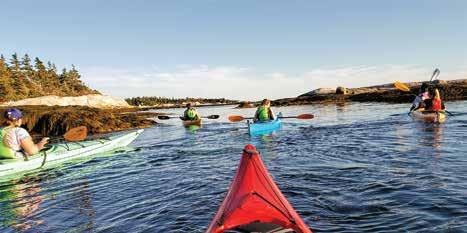
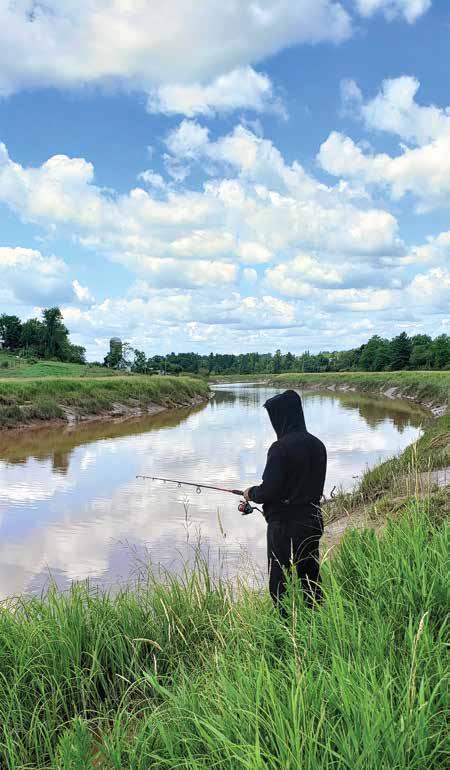
Using an inter-disciplinary approach to youth care HomeBridge provides youth with experiences of stabilization, emergency placement, therapeutic programming, educational opportunities and longer-term interventions in a youth care setting.
This mandate is achieved through a collaboration with stakeholders, a community orientation, a commitment to youth education, continued professional development, implementation of current evidence based interventions and therapeutic programming.

Part of the HomeBridge Community since 1979
Owned by HomeBridge Youth Society
Operating Costs Covered by the Department of Opportunities and Social Development
Mandate
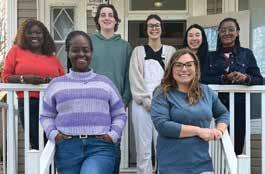
Hawthorne House is located in Dartmouth and focuses on providing care for six youth 12 - 18 years of age. This program closed in December 2023 as a result of critical staff shortages and reopened in April 2025.

Part of the HomeBridge Community since 1982
Owned by St. Paul’s Home Board
Operating Costs Covered by the Department of Opportunities and Social Development
Mandate
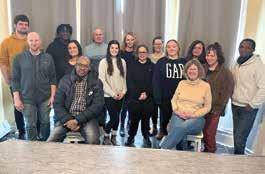
Jubien House is located in Halifax and serves six youth 12 - 18 years of age.

Part of the HomeBridge Community since 1993
Owned by St. Paul’s Home Board
Operating Costs Covered by the Department of Opportunities and Social Development
Mandate
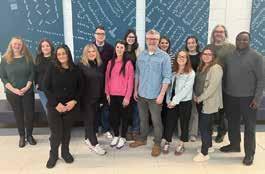
Sullivan House is located in Halifax and focuses on providing care for youth 12 years of age and over, who identify as female.
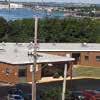
Part of the HomeBridge Community since 1999
Owned by the Department of Transportation and Infrastructure Renewal Operating Costs Covered by the Department of Opportunities and Social Development
Mandate
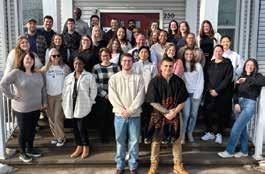
The Reigh Allen Centre is located in Dartmouth and is licensed as an emergency placement and crisis stabilization centre. It focuses on providing care for up to 14 youth 12 - 18 years of age who are in need of a stabilization, respite, or short-term placement. The centre utilizes an inter-disciplinary approach to create opportunities for cognitive behavioral changes within a safe environment allowing young people to experience themselves differently.

Part of the HomeBridge Community since 2009
Located in the Reigh Allen Centre Operating Costs Covered by the Department of Opportunities and Social Development
Mandate
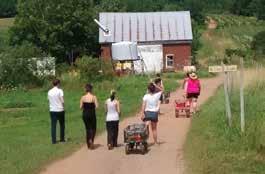
A separate two-bed unit designed to focus on providing care for youth with extraordinary needs that cannot be met in a standard group-care setting.
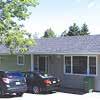
Part of the HomeBridge Community since 2003
Owned by St. Paul’s Home Board Operating Costs Covered by the Department of Opportunities and Social Development
Mandate
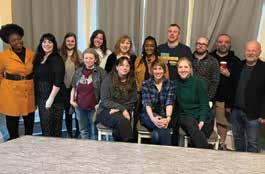
Cogswell House is located in Middle Sackville and focuses on providing care for four youth 12 - 18 years of age.
The Bridges for Learning (BFL) program continues to be a vital educational resource for youth in the care of the Minister, providing specialized academic, emotional, and social support. Established in 2005, BFL has supported over 600 young people who face unique and significant challenges in the traditional education system. The program strives to create a safe and supportive learning environment that promotes both academic success and personal growth.
During the 2024–2025 academic year, the program received 20 applications, reflecting a decrease from 26 applications in the previous year. A noteworthy shift was observed in the grade levels of enrolled students. While previous years saw a majority of high school students, this year the grade levels of students was almost equal amongst junior and senior high students. This may reflect a trend of younger youth being placed in care, or a potential increase in youth attending community schools before transitioning into the BFL program.
BFL continues to prioritize the development and implementation of individualized education plans tailored to each student’s learning needs. High school students earn credits through correspondence packages, guided and supported by the BFL team. Junior high students receive academic materials from their community schools, often accessed through Google Classroom, and are supported in completing these through both in-person assistance and online platforms.
In addition to core academic instruction, BFL places strong emphasis on social and emotional learning, recognizing its essential role in a student’s overall development. Through social and emotional learning, students gain tools for emotional regulation, conflict resolution, and decision-making. These skills not only contribute to lifelong success but are also applied toward credit attainment in Learning Strategies and other related courses.
This year, BFL offered opportunities to earn credits in:
English 10
Math at Work 10
Art 10
Music 10
Leadership 12
Construction Technology 12
Construction Technology 10
Mi’Kmaw Studies 11
Math Essentials 10
Physically Active Living 11
Canadian History 11
Learning Strategies 10
Learning Strategies 11
New course this year: Life 11 (inspired by the Health Literacy Program)
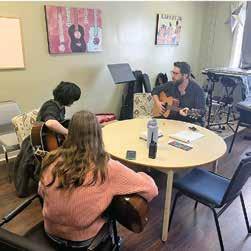
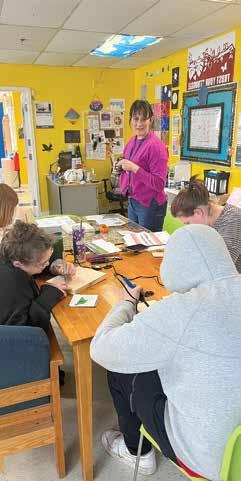
As some students return for a second year, expanding course offerings remains a priority to help them work toward high school completion, vocational opportunities and post-secondary readiness.
Creating a classroom where students feel a genuine sense of belonging begins with fostering a culture of belonging, inclusivity, and trust. This means recognizing and celebrating the unique identities, backgrounds, and strengths each student brings to the space. The team cultivates this environment by encouraging open dialogue, practicing active listening, and creating opportunities for every student to contribute. Building meaningful relationships, promoting collaboration, and consistently affirming each student’s value helps ensure they feel seen, heard, and are valued. When students know they matter, they are more engaged, motivated, and empowered to grow both academically and personally. Our commitment to holistic education extends beyond academics. The program creates a nurturing environment through several integrated supports:
For young people who have experienced trauma, face mental health challenges, or struggle with behavioral issues, recreation therapy can provide positive outlets for expression and coping, helping them engage more in their education. By tailoring activities to individual needs, the Recreation Therapist promotes inclusion, resilience, and a sense of belonging, which are crucial for vulnerable students to thrive both inside and outside the classroom. Recreation therapy remains a powerful tool for student engagement. By participating in recreational and leisure activities, students are better able to self-regulate and return to classroom tasks with renewed focus. These activities promote physical and mental well-being, offering students a fun and meaningful outlet.
The Recreation Therapist led the partnership with the Maritime Museum of the Atlantic and The Youth Development Initiative to facilitate the Safe Spaces and Relationship Program. The boat building program offers students a hands-on, collaborative experience that fosters a strong sense of belonging and community. As students work together to design and construct boats, they develop essential life and employment skills such as teamwork, problem-solving, time management, and craftsmanship. Beyond the technical aspects, the program creates a supportive environment where meaningful relationships are built. Through shared challenges and successes, students gain confidence, purpose, and a deeper connection to their education, making the program a powerful extension of the school’s commitment to personal growth and inclusive learning.
The Expressions Program continues to thrive, offering weekly music therapy and art sessions. Student participation was enthusiastic, with many using creative expression to process emotions and share their stories. These artistic outlets are both therapeutic and affirming for students navigating complex life circumstances.
HomeBridge’s in-house Occupational Therapist supports the BFL team in their efforts to address the complex needs of students. This collaboration ensures that interventions developed for the students address a broad spectrum of needs, including mental and physical health, sensory regulation, and the development of functional skills. The Occupational Therapist ensures that education plans are student-centered and align with each student’s unique education plan.
The Occupational Therapist led the Health Literacy Program for the students. It is noted that youth-in-care often have higher expectations regarding health literacy than their same-age peers. This past school year, one student was brought to the IWK. They got to use an ultrasound machine, watch and experience an EKG, learn about the heart, and create a cast.
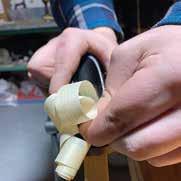
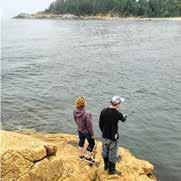
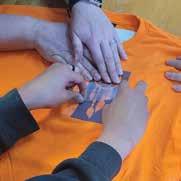
This program was funded by the Healthy Generations grant from the Canadian Pediatric Society and was initially soft-launched to create a high-school course specifically on health literacy for youth-in-care. While creating a stand-alone course was not feasible, it was determined that the Life 11 course, offered by the HRCE high school curriculum would be an option for those students taking part in this program. This course covers mental health, life, and physical health skills to support the transition to adulthood. Our partners with the IWK will now be working with the students, BFL team, Recreation Therapist and Occupational Therapist, to offer customized learning opportunities to promote health literacy and comfort with-in hospital settings for youth enrolled in the program.
The BFL students also participated in the CIVIX, students vote program. They organized a mock vote to gain hands-on experience with the election process. This initiative gave students a chance to learn about civic engagement by participating in a vote that mirrors real elections. CIVIX tallied the results of how the youth voted and shared how students voted across Canada, offering a unique look into youth perspectives on national issues.
Cultural Programming
The “Tony Talk” roundtable, facilitated by our Cultural Program Advisor, remains a valued component of classroom culture. This initiative creates a safe space for youth to lead and engage in meaningful discussions, building trust, voice, and cultural awareness.
Funding and Acknowledgments
The Department of Education continues to support the Bridges for Learning program by funding the teachers’ salaries. The Department of Opportunities and Social Development funds the salary of the Youth Care Specialist in the classroom. These important partnerships make it possible for HomeBridge to deliver high-quality education to a marginalized and underserved population, which is critical in ensuring educational continuity and growth for youth who face extraordinary barriers.
It is a profound responsibility—and an immense privilege—to support youth in care as they pursue their educational goals. Despite facing circumstances that no young person should have to endure, BFL students continue to demonstrate remarkable strength, resilience, and determination. The success of this program is seen not only in credit attainment and academic progress but in the personal growth and future possibilities of each student.
The Bridges for Learning team remains committed to walking beside these young people on their educational journeys, ensuring they are seen, supported, and empowered to succeed.
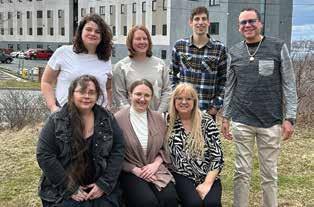
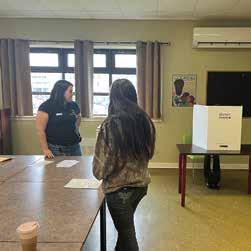
Agency Referrals
August 2024 - June 2025
Referrals
Community Schools connected to Bridges for Learning 2024- 2025:
Eskasoni Middle School
Halifax West High School
Millwood High School
Citadel High School
North Kings Education Centre
Glace Bay High School
Amherst Regional High School
Oxford – Machine Learning
Hebbville Academy
Five Bridges Jr High
Sherwood Park Education Centre
Trenton Alternative School
Charles P. Allen High School
Sydney Academy
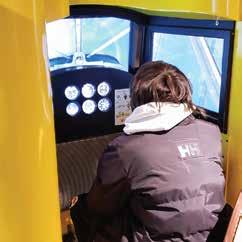

The young people served in the HomeBridge Community may have different stories, but they all come to our care for one important reason; to heal from trauma. They have faced more than their share of challenges in their young lives. Their experiences often include poverty, abuse, neglect, abandonment, substance misuse and significant trauma. This is compounded by the lack of a stable support network, which can lead to feelings of isolation and despair. Youth-in-care often move to different homes, change schools frequently and experience a lot of loss as people come and go from their lives. All of these experiences can have a negative impact on their physical and mental well-being therefore we work very hard to help them build resiliency through protective factors.
Protective factors are like shields that help individuals build resilience and buffer the negative impacts of risk factors or challenges. They are strengths, resources, or positive influences that help people cope better with stress, adversity, and trauma, ultimately improving well-being and decreasing the likelihood of negative outcomes. These are the experiences we create through the Expressions Program of the arts and why this year’s theme is “Healing Through the Arts”
By creating environments and arranging experiences that promote resilience and positive development we are helping to build protective factors for vulnerable youth. This not only improves their immediate well-being, but also sets a foundation for their future success and resilience. It is a proactive approach that supports positive development and strengthens communities by nurturing capable, confident, and responsible individuals. It has been clinically proven that engaging in therapeutic art-based programming accomplishes these outcomes. This is why your support is so meaningful and why it will have a very positive impact on the young people.
Traditionally confined to mental health institutions, Art and Music Therapy are now commonly used in community settings, including schools, shelters, nursing homes, and child and youth care settings. We’ve seen the value in this therapeutic, life-skill building program since 2004, but continue to evolve and adapt our practices to keep up with the latest clinical research. Our skilled and talented facilitators who work with the young people through the Expressions program create a safe and welcoming environment for the participants and work with them to create an outlet for expressing feelings and emotions. The activities may simply look like learning to play the guitar or painting a self-portrait, but they are offering a holistic approach to improving overall health and well-being. Participation in the Expressions program acts as a protective factor by promoting emotional regulation, fostering positive identity formation, facilitating social connection, developing skills, reducing risky behaviours, enhancing cognitive functions, nurturing cultural pride, and improving physical health outcomes. These factors collectively strengthen resilience and empower vulnerable youth.
The Expressions program continues to offer Art Classes, Music Therapy, and Photography. Sessions run from September through June throughout the entire HomeBridge Community, including our on-site school program, Bridges for Learning. This year guitar lessons were very popular and we had our first ever fiddle player in the HomeBridge Community. A number of young people moved on to Master Classes for further one-on-one instruction in their instrument of choice. We also saw many budding artists develop their skills this year. Our new Art instructor led many sessions with traditional art projects and also tried some new creations to connect with the youth. The young men at Cogswell House, for example, are very interested in fishing and not as interested in typical art projects. With this in mind, the Art Instructor purchased supplies and held sessions where they made fishing lures and spinners. Implementing these types of programs and activities in a coordinated and supportive environment can effectively build protective factors for vulnerable youth, strengthen their resilience, and empower them to overcome adversity and thrive. That is the power of Expressions, which is why we are incredibly grateful to the donors who make this program possible. It is 100% funded by corporate and community support. This year’s supporters are listed below.


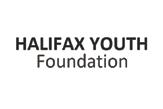




Individual Youth per Department of Opportunities and Social Development Services Region or Child and Family Wellbeing Offices Residing in Programs69 Total
Mi'Kmaw Family and Children Services (4 Individuals)
Central Region (30 Individuals)
Western Region (12 Individuals)
Eastern Region (9 Individuals)
Northern Region (14 Individuals)
Program Placements of Youth from Outside the Central Region - 35 total individuals
(24)
69 individual youth were served during 2024/2025, however there were 94 total youth admissions to all programs, which includes a number of youth who had multiple admissions and were served by more than one HomeBridge program.
Length of Stay in Care - Long Term
Average Length of Stay Requiring Emergency Stabilization at the Reigh Allen Centre (RAC)

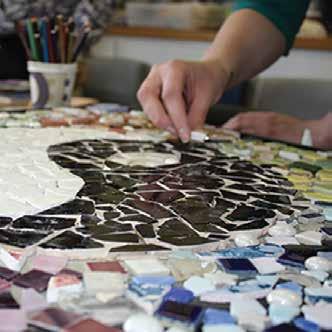
This past year has been an exciting and rewarding journey, filled with opportunities to connect with the incredible young people in the HomeBridge Community. Each youth brings with them their own unique strengths, interests, and hopes; and it’s been a privilege to support them in exploring new activities, building confidence, and fostering connections with their communities.
Through recreation, we’ve created moments of joy, resilience, and growth—whether it was through art, woodworking, adventures in nature, sports, or community initiatives. Seeing the youth step outside their comfort zones, develop new skills, and take pride in their accomplishments has been truly inspiring.
I am grateful for the dedication of the HomeBridge team, the enthusiasm and bravery of the youth we serve, and the support of our community partners. Together, we continue to create meaningful experiences that empower young people to thrive. I look forward to another year of discovery, connection, and fun!
Rob Grandy,
CTRS
Over the past year, it has been gratifying to have the opportunity to connect with the young people at HomeBridge through the following activities:
Golfing
Nature Photography
Skateboarding
Sea Kayaking
Working out at the Zatzman Sportsplex
Bouldering at Seven Bays
Skating
Woodworking
Signing up for a Library Card
Swimming
Biking
Bike Repair
Signing up for a gym membership and learning to use the gym independently
Collecting Sea Glass
Gardening
Playing Pool
Employability Skills and Certifications
Soccer
Beach Days
Tidal Bore Rafting
Pottery with Local Artist Lynette Peters
Basketball
Hiking
On-Tree
Magic Mountain

Hatfield Farm
Deep Sea Fishing
Cooking
Yoga
Disc Golf
Touring the Art Gallery of Nova Scotia
Visiting the Black Cultural Centre
Playing Guitar
Activate Halifax
Shopping for Art Supplies
Lunch and Dinner Outings
Geocaching
Atlantic Splash Adventure
Bowling
Splashifax
Playing Cards
Social Drives
Stand Up Paddleboarding
Playdium
Rock Climbing at East Peak
Pottery Painting
Skiing and Snowboarding at Martock
Dog walking
Horseback Riding
Boating with the Maritime Museum of the Atlantic
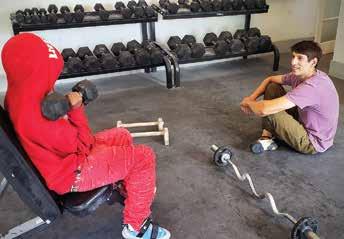
This year the young people took an especially hands-on role in planning their summer recreation activities. It was exciting to watch them step outside their comfort zones, and to experience themselves in new ways through the lens of recreation.
2024 was our busiest summer yet! During the break from school, HomeBridge youth participated in 290 hours of recreation through either 1:1 sessions with the Recreation Therapist or group outings facilitated by the Recreation Therapist and the Youth Care team.
The teams across all programs were especially innovative and supportive, helping to engage the young people and truly make the most of their summer. Our adventures ranged from quiet walks around the neighborhood with the Recreation Therapist’s dog, to a road trip to Magic Mountain in Moncton.
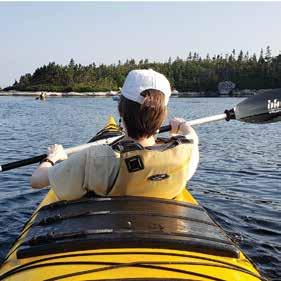
A standout moment from the Summer Recreation Program this year was the Youth Farmer’s Market. For the first time ever, the youth sold out of all their produce! They demonstrated impressive entrepreneurial skills and teamwork during this program. Participants completed practice job interviews, picked fresh produce in the valley, and helped organize a successful sale that included fruit, vegetables, baked goods, and their own artwork.
This program was made possible by the generous support of the Youth Development Initiative. It was planned and facilitated by our Recreation Therapist, Program Activity Coordinator, and Youth Care Workers.
Ensuring young people can access the healthcare they need requires a flexible, person-focused approach. This past year, we saw the impact of integrating Recreation Therapy with the outstanding on-site care provided by IWK Pediatrician Dr. Tania Wong.
For many youth-in-care, visiting a pediatrician can be challenging due to fear, past negative experiences with the healthcare system, or difficulties expressing their health concerns. Combining principles of Relational Child and Youth Care, Recreation Therapy, and pediatric medicine, worked well to create a more supportive and accessible healthcare experience.
Some examples of this include:
Combining doctor visits with recreation outings that are meaningful to the young person
Supporting young people to participate in recreation activities together with the Rec Therapist and Doctor to build rapport and reduce their anxiety regarding their visits
The Recreation Therapist joining in on visits with the youth to provide a sense of safety and familiarity
Supporting youth with needle phobias to receive their Meningitis vaccines with help from the Recreation Therapist’s dog.


Safe Spaces and Relationships (Boat Building)
During the 2024 winter semester, BFL students built two beautiful eight-foot cedar stand-up paddleboards in the boat shop. Throughout the project, they learned about safely using a wide variety of hand tools, reading measurements and work plans, and being part of a team. The students named the paddleboards “Tiny Dancer” and “Tu Valo”, which means “your worth” in Spanish.
In addition to working in the shop, participants were able to earn high school credits and obtain a variety of employability certifications including:
WHMIS
New & Vulnerable Worker Safety
Planning your Career
Pleasure Craft Operators Card
Standard CPR/AED First Aid
After eight years, the Maritime Museum of the Atlantic now has quite the fleet of watercraft built by Bridges for Learning students. For example, we can load the youth’s paddle boards onto a rowboat made by 2022 participants, and tow it to McNab’s island on the motorboat completed by 2023 participants. All of the crafts built by Bridges for Learning students are being used by young people around Halifax for a variety of on-the-water learning programs. This is something that the students have expressed a lot of pride in.
At the time of this report, another batch of boat builders were hard at work completing a fourteen-foot sailboat to launch at the end of the school year.
This program is made possible by collaboration between our Recreation Therapist, the Bridges for Learning team, the Maritime Museum of the Atlantic, and funding from the Youth Development Initiative. In order to further develop the boat building program, Recreation Therapist, Rob Grandy attended the Teaching with Small Boats Alliance Biennial Conference in Mystic, Connecticut this year along with Dr. Shane Theunissen - a former Bridges for Learning teacher and current Mount Saint Vincent University professor. The two of them spoke on the Behavioural Development: Changing the Inner Voice panel at the conference.
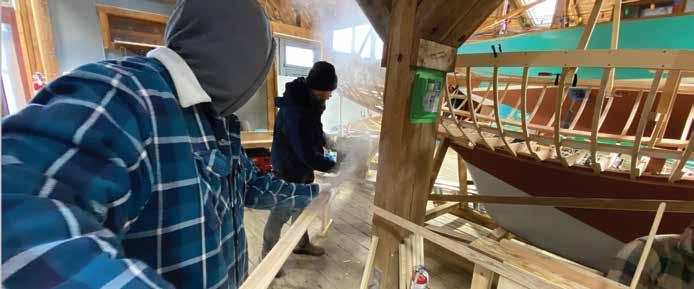















Occupational therapy helps individuals engage in the meaningful activities that shape their everyday lives. Occupational therapists work collaboratively with clients to understand their goals, needs, and environments. The primary aim is to promote health, well-being, and quality of life by empowering people to access, initiate, and maintain the activities that matter most to them. This process involves identifying and addressing barriers that limit meaningful participation while also building on personal strengths and skills.
Importantly, occupational therapy upholds the principle that everyone, regardless of age, ability, gender identity, background, or circumstance, has the right to participate fully and meaningfully in life.
Occupational Therapy at HomeBridge
Occupational Therapy provides dynamic, client-centered support for youth-in-care while offering consultation services to Youth Care Workers, the Bridges for Learning Team and Supervisors. As a generalist, our Occupational Therapist addresses various needs, including mental health, physical health, sensory regulation, environmental modifications, and the development of functional skills. Guided by the principles of cultural humility, neurodiversity, and gender-affirming care, all services are tailored to align with each youth’s unique goals, identities, and preferences. This role involves direct intervention, program development, and collaboration across multidisciplinary teams to promote youth participation, growth, and success in educational, social, and transitional settings.
Direct Service Summary
Uptake Summary May 2024- March 2025
Before May 2024, there had been zero youth self-referrals
Referral Requests: 18
Youth Self Referrals: 11
Active Files: 138
Visits with Youth: 204
Steady increase in service visits from May 2024 to March 2025
Upward trend in the number of youths receiving direct Occupational Therapy services
Participation and interest have been higher for life-skill programs
Supported therapeutic relationships in group care environments
Provided a space to “advertise” Occupational Therapy
Provided a space for youth to self-refer to occupational therapy services
Lead Alert Program ™ to support self-regulation through the sensory system
Provided support with educational materials related to life skills
Joined Program Coordinator on programs to build rapport with youth
Health Literacy Program
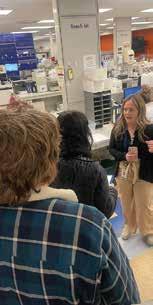
Youth-in-care often have higher expectations regarding health literacy than their same-age peers. For this reason, our Occupational Therapist worked with the IWK and our onsite school program, Bridges for Learning to roll out a program to offer customized learning opportunities to promote health literacy and comfort with-in hospital settings. This was a pilot program that has now been adapted to fit the Life 11 course, offered by the HRCE high school curriculum.
Direct Service Summary...continued
Interventions and Support for Direct and Consultative Work
Life Skills and Transition Readiness: Cooking, finances, hygiene, routines, health management, interpersonal effectiveness, preparing and managing appointments, and advocacy
Regulation and Coping: Interoception, Dialectical Behavior Therapy (DBT), and Cognitive Behavioral Therapy (CBT) informed coping skills, psycho-education, emotional literacy, and emotion-focused coaching, Alert Program ™
Environmental Modifications & Adaptive Equipment: Visuals, Sensory Environment, Seating, Executive Functioning Supports, Specialized Computer Software, Alarms (hearing impairment)
Specific Mental Modalities: Exposure therapy, behavior replacement therapy
Increasing Occupational Performance in specific areas: Sleep, toileting, bathing, eating, and reproductive health management
Consultation: Psycho-education on diagnosis-specific approaches, YCW/OT joint interventions, inter-disciplinary collaboration
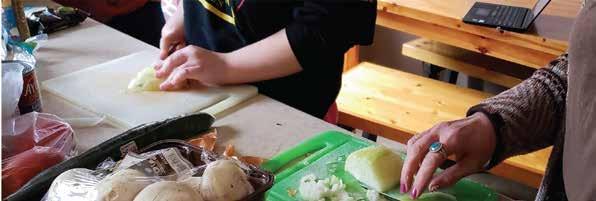
Occupational Therapy Program Overview
Long Term Homes – Snapshot and Summary May 2024-March 2025
Food Literacy and Meal Preparation
Hands-on cooking, label reading,food handling/storage, meal preparation

Baking, Decorating, and Painting
Created Halloween decorations and baked goods
Art Therapy Intro Supported Art Therapy

Vocational Skills/Coffee House
Prepared goods, clothing, and art to sell at the Holiday Coffee House
Self-Care
Making sugar scrub, self-massage techniques, and relaxation techniques

Budgeting
Stimulation to support understanding relevant to budget management
Financial Literacy
Identifying common financial scams and how to protect against them


Therapeutic Programming within the HomeBridge Community has been and continues to be an essential component in helping youth experience themselves differently, both within our programs and within their communities. We try to focus on “meeting each youth where they are at” to discover what their interests, goals, hobbies, and needs are at that given time. The personal growth of program participants is encouraged through adaptable life skills, developing employability skills, recreational activities, and emotional management (how to identify triggers and coping strategies when dealing with anger, anxiety, or self-esteem). As always, our program planning remains rooted within our care planning framework, the Circle of Courage (Brendtro, Brokenleg, and Van Bockern, 1990) which includes:
Mastery: Achieving attainable goals by being creative, persistent, competent, self-motivated, and accepting challenges.
Belonging: Being a respectful part of a group by being friendly, caring, cooperative, respectful, and forming healthy relationships.
Generosity: Contributing positively towards others by sharing, caring, being supportive/helpful, compassionate, and expressing social/societal concerns.
Independence: Demonstrating personal responsibility by being assertive, confident, empowered, leading (displaying leadership), problem solver, and disciplined.
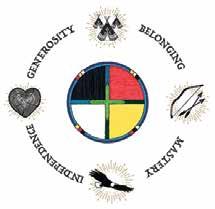
Daily Life Skill Programs are constantly changing to suit the needs of the individual groups of young people who participate at any given time. Each youth comes to us with their own personal story so it is crucial we are implementing programs that will be beneficial for their individual needs and development. We introduce therapeutic practices including informed Cognitive Behavioural Therapy (CBT) that tend to focus on the here-and-now and problems they may be discovering on a day-to-day basis. CBT helps identify, question, and change thoughts that may be causing them difficulties. Other programs introduced are mindfulness, distress tolerance, and emotional regulation to help youth how to live in the moment. This helps young people develop healthy ways to deal with stress and regulate their emotions so they can improve their relationships with others and themselves.
Some kind of exercise or physical activity is also incorporated weekly as it is known to enhance mood, reduce symptoms of anxiety and depression, boost energy levels, and so much more. Our Program Activity Coordinator works closely with our Recreational Therapist to collaborate on new and exciting activities the youth may want to try out. Together, they have introduced youth to bouldering, rock climbing, proper and safe lifting techniques in the gym, horseback riding, boat building, nature walks, and even car rides to help build connections. Collaboration with our Occupational Therapist is also part of the process as she always has educational insights on how to help youth who may be struggling to recover, develop, or improve skills that are needed for day-to-day living. Together we have introduced programs that have helped youth identify their bodies' messages, needs, and wants. Including finding appropriate coping mechanisms when they are overwhelmed or overstimulated using the alert program. There are times when one of us may have a closer relationship with a young person. By collaborating, this helps build, strengthen, and hopefully foster future connections.
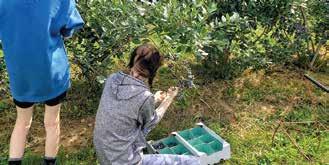
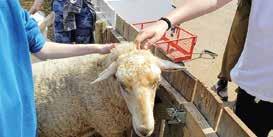
One of the structured programs that is regularly offered is Cooking Towards Independence. This program, funded by the Children’s Aid Foundation of Nova Scotia, continues to be a favourite with the youth. Through this life and employability skill program, affectionately known as “Food Fridays”, participants are encouraged to learn basic cooking and food handling skills, nutrition, and how to shop wisely to combat rising food costs and inflation. They also practice their communication skills as they plan and negotiate their Food Friday menu as a group, choosing a main meal, side dish, and dessert for approximately 20 people that can be made with a $100.00 budget. This planning process also allows the young people to feel connected to their culture and families as they can make family recipes or culturally traditional dishes. The skills they form while participating in this program are not only necessary for independent living but are also transferable to the job/labour market. Many find their first job in the food industry and some even discover a passion for culinary arts as a career. On weeks we aren’t doing Food Fridays, we still incorporate making a healthy drink and/or treat. Whether this looks like smoothies, wellness shots, or protein snacks it continues to build on their culinary skills and awareness.
Throughout the year, youth are offered an array of engaging programs geared towards life-skills and social-emotional learning including fun, physically active, pro-social programs out in the community. These activities range from leisure activities to entrepreneurial opportunities such as our Youth Farmers Market, funded by the Youth Development Initiative. In previous years, the young people have really enjoyed harvesting fruits and vegetables to sell to the community and give to those experiencing food insecurity or housing displacement. These types of programs often lead to meaningful discussions about the impacts of inflation and the housing crisis, and what this may mean for their futures. With these important conversations, youth then brainstorm ways to better their future, through continuing their education to gain access to jobs that can withstand inflation. With the success of the Youth Farmers Market in the past, and the popularity of Food Fridays, it has been decided to expand the Reigh Allen Centre community garden this summer to include fruits, vegetables, and flowers. The hope is for the garden to become part of our therapeutic program to educate youth on responsibility, nutrition, and nurturing. The flowers planted will also be used to create bouquets that the young people can display throughout the building or pass on to family, friends, or members of the public to spread positivity.
Our Annual Holiday Coffee House showcases talents discovered in the Expressions Program of the Arts, but the young people also capitalize on the opportunity to operate a craft sale as part of the event. As a group, they plan and price craft projects they would like to create and then sell to Coffee House patrons or give as gifts to their family members. This event allows them to build confidence and pride as they show people just how talented and resilient they really are. Also, this experience inspires them to focus on employability and entrepreneurial skills they can use in the future.
Some of the other fun, less structured activities they participate in are as follows:
March Break and Summer Programing:
Horseback riding
Fishing
Hiking
Splash parks
Outdoor interactive activities
Swimming
Art programs
Bowling
Skating
Going to the Gym
Geocaching (and making positive messaging geocaches)
Glow in the dark mini-golf
Playdium
Activate
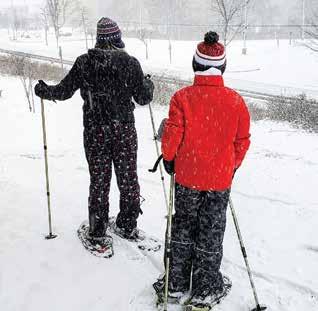
All therapeutic programs offered in the HomeBridge Community are designed to assist youth in developing skills to enhance their lives both now and in the future. Some of the structure programs offered during the daily programming are as follows:
Cooking Towards Independence
Butterfly Release Program
Gardening
Conflict Resolution
Healthy Relationships (peer, family, partner(s)).
Sexual Health & Puberty education
Self-esteem
Hygiene (caring for your body, self-care)
Habit formation
Alcohol and drug awareness
Encouraging empathy/ anti-bullying via plants (“Value of Words” project).
Communication skills
Aroma Therapy
Stress reduction
Daily life skills
Visual arts
Pottery
Wood Burning
Stress Reduction (Identifying triggers, coping strategies, reflection, and HeartMath, Bio-Feedback)
Yoga
Fidget tool making
Entrepreneurial Programs (Farmers Market, Coffee House, Partnership with IWK art) and service learning
Resume building
Cultural Awareness
LGBTQ+ Lessons plans (terminology, community, history, awareness).
Volunteering (lunches for those experiencing community displacement)
Physical activity (gym, hikes, rock climbing, indoor play, etc.).
Community outings to the Art Gallery, Georges Island, Discovery Centre, Museum of Natural History
Community clean up around the RAC
Respectfully submitted by: Danielle Payne, Program Activity Coordinator
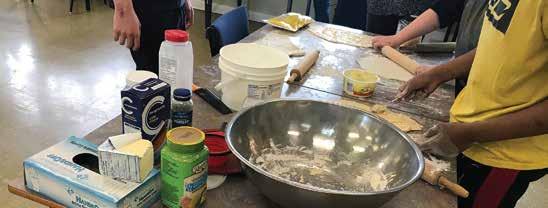
The young people who live in the HomeBridge Community are among the most vulnerable youth in our province. They come to us during a critical and often challenging period in their lives, and we see it as both a privilege and a responsibility to provide them with the highest quality care and support. We take this commitment seriously, continuously evolving our practices as we learn and grow.
Our team is made up of a diverse group of professionals, ranging from those with decades of experience to those just beginning their careers. Each of these dedicated, hardworking practitioners brings unique expertise and perspectives to our work. We believe in sharing this knowledge to help develop the next generation of professionals. One of the ways we do this is by offering student placement opportunities, which not only contribute to the field of Child and Youth Care but also enrich our own learning. The exchange of ideas and fresh perspectives from students is invaluable, as we often learn as much from them as they do from us.
This year, HomeBridge provided placements for 15 students seeking hands-on experience in human services. Each student was paired with a dedicated HomeBridge Student Field Advisor, ensuring they received the guidance and support needed to achieve their learning objectives. These students came from the following institutions and programs:
Nova Scotia Community College, Ivany Campus - Child and Youth Care
Nova Scotia Community College, Kingstec Campus – Social Services
HomeBridge 5-Week Training - Child & Youth Care
HomeBridge employees also contributed their time and talents by sitting on the following Boards and Committees outside of the organization:
Nova Scotia Child and Youth Care Workers Association (NSCYCWA)
Relational Child and Youth Care Practice Journal Advisory Board
Curriculum Advisory Board: Holland College Child & Youth Care Worker Program
Memberships
Project Management Institute, Nova Scotia Chapter
Association of Fundraising Professionals, Nova Scotia Chapter College of Occupational Therapists of Nova Scotia (COTNS)
CPA Canada (Chartered Professional Accountants)
CPANS (Chartered Professional Accountants of Nova Scotia)
Chartered Professionals of Human Resources Association of Nova Scotia (CPHR Nova Scotia)
Trafficking an Exploitation Service System (TESS)
Nova Scotia Child and Youth Care Workers Association (NSCYCWA)
Nova Scotia Society of Occupational Therapists (NSSOT)
Canadian Association of Occupational Therapists (CAOT)
International Child and Youth Care Network (CYC Net)
National Council for Therapeutic Recreation Certification (NCTRC)
Nova Scotia Therapeutic Recreation Association (NSTRA)

At HomeBridge, we are committed to excellence in all aspects of our work, which requires continuous learning and growth. Staying informed about the latest therapeutic interventions and programming for vulnerable youth is essential, as is keeping up with emerging research and trends across the diverse professional fields that make up our multi-disciplinary team. This year, our employees have engaged in various educational opportunities to enhance their knowledge and ensure we provide the highest quality service.
External training
Atlantic Safety & Adventure
Wilderness & Remote First Aid
Association of Fundraising Professionals
Maritime Fundraising Conference - Building Better Practices Fundraising in Uncertain Times: How to Be Proactive to Secure Your Funding Forward Together: Strengthening Relationships, Understanding and Collaboration Between Philanthropy and Indigenous Communities
Leveraging AI for Fundraising and Communications in Not for Profits
Canadian Association of Occupational Therapists (CAOT) Introduction to Dialectical Behavior Therapy for Occupational Therapists
Canada Helps Why Donate Securities?
Navigating the 2024 Charitable Donation Deadline Extension Important Ways to Drive Donors to your Site
Carters Professional Corporation
2024 Carters Annual Charity & Not for Profit Law Webinar
CPHR BC & Yukon
Privacy in the Workplace
Chartered Professional Accountants of Nova Scotia (CPANS)
Professional and Applied Ethics for Canadian CPAs
Accounting Standards for Not for Profit Organizations Fraud Risk Management
Crisis and Trauma Resource Institute Critical Incident Debriefing
CYC-Net
Lessons learned in Child and Youth Care
Dr. Gabor Mate
The Myth of Normal, Trauma, Illness and Healing Toxic Culture
Frank Delano
The Art of Delegation for Supervisors
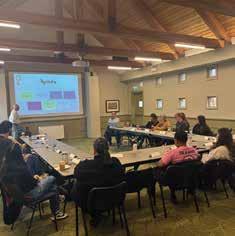
Supervising Gen Z, Millennials, Gen X, and Baby Boomers: Intergenerational Supervision Strategies
Heather Modlin
Supervision
HRCE
Autism in the Classroom
HR Forward Employee Engagement

Gateway to an Intercultural Workplace
Recruitment and Interviews - Bridging the Cultural Gap
Inclusion, Diversity and Human Connections
John Digney Being Trauma
Understanding Challenging (needs based) Behavior
Resilience and Responding to Needs-Based Behavior
Caroline Moore and Thom Garfat
Noticing
Pagtesm and Associates Inc
Seeing OneSelf (Indigenous Training)
RBC Royal Bank
Digital Transformation
Sensational Brain
Using Occupation and Meaning to Transition At-Risk Youth to Full-of-Promise
Youth: A Psychosocial Approach to Evaluation and Intervention
The Interconnected Nature of Trauma and Sensory Processing
Saint Mary’s University Executive & Professional Development
Executing Change and Overcoming Resistance
Human Resource Fundamentals
#SocialEast
Storytelling Through the Sectors: The Common Thread That Drives Impact
LinkedIn Creative Strategies to Maximize Engagement
Crafting a Community Led Content Strategy
Purple Chickens: The Power of Counterintuitive Thinking
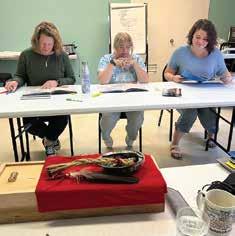
A New Era of Storytelling - Winning Strategies to Accelerate Business Growth in a Changing World
Workers Compensation Board of NS
Duty to Cooperate
Internal Training
Cultural Awareness Training
Mindwell Academy
Basic Fire and Life Safety
WHMIS
Medication Awareness
Non Violent Crisis Intervention
Saint John's Ambulance First Aid and CPR
SafeCheck
Food Safety Certification
Student Advisor Training
The Purposeful Use of Daily Life Events (DLE)
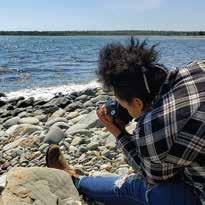
HomeBridge leverages various video chat platforms to facilitate consultations, mentoring, and learning opportunities with out-of-region experts at minimal cost. Whether through one-on-one consultations with global Child and Youth Care professionals or group training sessions that would otherwise require travel and accommodations for facilitators, this technology has significantly enhanced the accessibility and feasibility of training and consultation opportunities.
Last fall, HomeBridge successfully organized a province-wide, 5-week professional development and training initiative that was offered at no cost to service providers, thanks to the generous funding support from the Department of Opportunities and Social Development. This online training featured relevant modules focused on relational practice with youth and families. This included insights from both local and international experts, with contributors from New Zealand, Ireland, South Africa, and across Canada sharing their research and perspectives on effective strategies for working with youth and families. In total, we offered 138 hours of webinars, covering essential content for effective practice.
This initiative proved to be an exceptionally cost-effective and efficient training series, bringing together service providers from across the province to learn, collaborate, and share knowledge.


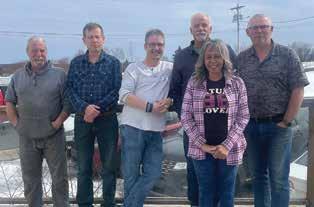

A sense of belonging is essential to our emotional and psychological well-being. Being part of a supportive community helps us feel connected and reassured that we are valued. This is especially true for the young people in the HomeBridge Community, many of whom have experienced complex trauma, including loss, abuse, neglect, and isolation. For them—and for all of us—a strong, compassionate community provides stability, understanding, and healing.
We understand that living near a youth care program may sometimes present challenges, and we sincerely appreciate the community’s patience and support. Our goal is to be good neighbors and to foster open dialogue to address any concerns our neighbours may have. The young people in our programs have endured significant hardships and need time, guidance, and support to heal. They thrive in communities that reinforce their worth while also holding them accountable for their actions. To create a sense of normalcy in their lives, it is essential that they live in safe and welcoming neighborhoods. Our highly trained teams provide 24/7 care and support, helping them navigate their healing journey. Change does not happen overnight, and we are deeply grateful for the understanding and kindness that enable these young people to take steps toward a brighter future.
Each year, we produce a Report to the Community, which is hand-delivered to neighbors surrounding our programs to keep them informed about developments within the HomeBridge Community. This initiative is a key part of our neighborhood relations strategy, as we truly value the opportunity to connect with community members and hear their feedback. The report includes information about our programs and the work we do with vulnerable youth. This process has been invaluable, allowing us to engage in meaningful conversations and collaborate in building stronger communities that support all their members.
The only mistake you can make is not asking for help. -Author unknown
At HomeBridge, we are deeply committed to providing the highest quality care and support for youth-in-care. However, we recognize that we cannot do this work alone. Our success is made possible through the generosity and dedication of our incredible community partners, whose contributions help expand our services and provide essential resources that make a lasting impact.
For over ten years, the IWK Health Centre has been an invaluable partner, offering clinical support to both our employees and the young people in our programs. Their contributions include access to a pediatrician on-site at the Reigh Allen Centre, ensuring that youth receive essential medical care in a familiar and supportive environment. Access to mental health and addictions support, along with primary healthcare services, has been transformative for the well-being of our youth.
Since 2014, we have also benefited from the expertise of Clinical Social Worker Jeff Thoms, who has served as a Mental Health and Addictions Counselor. His knowledge in substance misuse and harm reduction has been instrumental in supporting both our young people and our youth care teams. Through his compassionate and skilled approach, he has helped create a safer and more informed environment for those navigating complex challenges.
In the summer of 2022, we welcomed Dr. Tania Wong to the HomeBridge Community. With a fully operational clinic at the Reigh Allen Centre, she offers pre-scheduled and walk-in appointments one day per week. Her presence has significantly improved healthcare outcomes, including better prescription and medication management, early diagnosis of sexual health concerns, and overall improved access to medical support.
While the IWK Health Centre offers many community resources, getting youth-in-care to attend outside appointments can be challenging for various reasons. By bringing these vital services directly to where they live and providing continuity of care through trusted professionals, we have seen a remarkable shift. The young people in our care now look forward to their appointments, fostering a sense of trust and empowerment in their own healthcare journeys. We are profoundly grateful to the IWK Health Centre for their unwavering support and commitment to our mission.
For over a decade, The Home Depot Canada Foundation has been a steadfast supporter of HomeBridge, providing invaluable assistance through the Orange Door Project. With a national focus on preventing and ending youth homelessness, the foundation’s mission aligns seamlessly with our efforts to prepare young people for independent living.
Through various initiatives, including an in-store campaign where customers can purchase an “orange door” to support the cause, The Home Depot Canada Foundation has raised significant funds to help vulnerable youth. The dedicated team at The Home Depot Dartmouth Crossing has been instrumental in these efforts, raising over $100,000 to date. This funding has been used to support life-skills development, therapeutic programming—such as our Recreation Therapy program—and the purchase of a van for outings, greatly enhancing our ability to provide meaningful experiences for youth.
The impact of this support is immeasurable. We have witnessed incredible milestones, the formation of lasting relationships, and remarkable personal growth among the young people we serve. Thanks to these contributions, we can continue creating opportunities that empower youth, build confidence, and prepare them for a brighter future.
We are profoundly grateful for the generosity and commitment of our community partners. Their support enables us to create positive experiences and opportunities that shape the lives of youth-in-care. Together, we are making a difference—ensuring that every young person has the chance to build a future filled with hope, stability, and success.
Department of Opportunities and Social Development fund HomeBridge’s operating budget
St. Paul’s Home Board own Sullivan House, Jubien House and Cogswell House
Department of Transportation and Infrastructure Renewal own the Reigh Allen Centre
Department of Education fund two Teaching positions for our school program, Bridges for Learning
IWK Health Centre provides mental health, addictions and pediatric support
DONATIONS/FUNDRAISING – FISCAL 2024/2025
Health Literacy Program >>>>>>>>>>>>>>>>>>>>>>>>>>>
Youth Development Initiative (YDI): Farmer’s Market & Safe Spaces & Relationships Grants >>>>>>>>>>>
Cooking Toward Independence Program >>>>>>>>>>>>>>>>>>>>
General Donations >>>>>>>>>>>> >>>>>>>>>> >>>>>>>
Holidays of Hope (Including St. Paul’s Christmas for Youth) >>>>>>>>>>>>>
Expressions Program of the Arts >>>>>>>>>>>>>>>>>>>>>>>>
Recreation & Occupational Therapy Program >>>>>>>>>>>>>>>>>>
Bridges for Learning (Department of Education grant) >>>>>>>>>>>>>>>
$ 30,431 $163,700
HomeBridge received/fundraised over $262,000 in fiscal 2024/2025
Thank you to those who contributed to the Annual Report: Jim Perrin, Ernie Hilton, Caroline Moore, Renee Stevens, Jackie Woodford, Colleen Clark, Carol Lethbridge, Jodi Angus, Danielle McLauchlan-Payne, Rob Grandy, Jenny Blok and Margaret Lawton
18 Dartmouth Air Cadets Squadron
Advent Gift Bag Program - (St. Peter's Parish church groups)
Arthur J. Gallagher Canada Ltd.
Bel Ayr School
Ashley Blissett
Bluenotes, Park Lane
Robert & Patricia Boulton
Paul & Louise Bourbonnais
Christie Brown
Alex Bruce
Beverly Budden
Tammy Campbell
Canadian Coast Guard Dartmouth
Todd Carruthers
Children's Aid Foundation of Nova Scotia
Alicia Christensen
Larry & Jean Clancy
Deborah Clarke
Congregation of Notre Dame Visitation Province Centre
Christy Couttie
CUPE Local 4471
Dalhousie Medical Alumni Association
Dalhousie Medical Students (Art Connects Fundraiser)
Tim David
Eastern Passage Education Centre
Tanya Godin
Grace United Church
Shirley Graham
Nicholas Graham
Gerrie Grevatt
Halifax Youth Foundation
Linda Harrie
Henry & Berenice Kaufmann Foundation
Healthy Generations
Ernie Hilton
Home Depot Canada Foundation
Imperial Oil & ExxonMobil Companies in Canada
Investment Property Owners Association of NS
IODE Mary Lawson Chapter
Kellye Johnson
Brian Kelly
Karen Kirk
Kiwanis Club of Dartmouth Charitable Foundation
Cynthia Lank
Kelly Lawrence
Justin Lew
Ian MacKay
David & Doreen Martin
Leanne McCarron
Catherine McKiel-Stacey
John Muller
Music 4 Mental Health
Heather Myatt
Sara Napier & Family
Nan Nichols
Nova Scotia Association of Realtors
Nova Scotia Power
John Oyler
Diane Palmeter
Stephen Parker
PayPal Giving Fund Canada
Lisa Peck
Heather Raycroft
RBC Royal Bank of Canada
Genny Shaw
Frank Shelley
St Paul's Home
Renee Stevens
Toni Stewart

Student Services Advisor, NSCC Ivany Campus
Carla Taylor
Telus Canada
The Canadian Progress Club Halifax-Citadel
The Shoebox Project for Women
The Windsor Foundation
Michele Trider
Urchin Property Management Inc.
Patricia Vardy
Sabrina White
David Woodford
Woozles
Helen Wright
Claire Young
